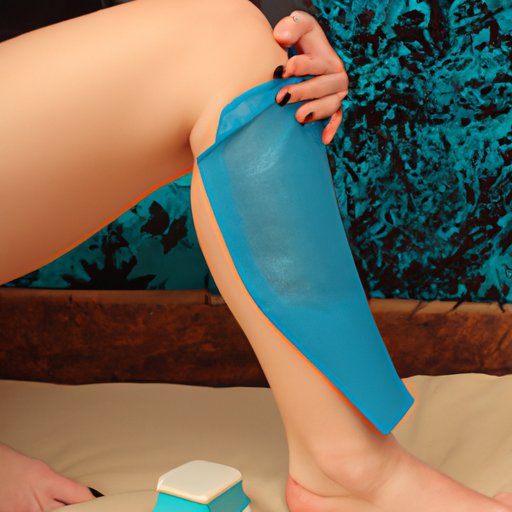Introduction
Shin splints are a common condition that affects runners and other athletes, as well as anyone who engages in activities that involve running or jumping. Shin splints are caused by inflammation of the muscles and tendons surrounding the tibia, which is the large bone in the lower leg. The pain from shin splints can range from mild to severe and can be felt along the inner part of the shin bone.
Ice the Area
Icing the area affected by shin splints can help reduce inflammation and ease the pain. Ice should be applied for 10 to 15 minutes at a time, several times per day. Be sure to wrap the ice in a towel or cloth before applying it to the skin to prevent possible tissue damage.
Rest
Resting is an important part of treating shin splints. It’s important to give the affected area time to heal and to avoid activities that put too much strain on the legs. Activities such as running, jumping, and stair climbing should be avoided until the pain has subsided.
Compression
Applying a compression bandage or wrap to the affected area can also help reduce swelling and pain. Compression wraps should be snug but not too tight. They should be adjusted throughout the day if needed.
Elevate
Elevating the leg can also help reduce swelling and pain from shin splints. The leg should be elevated above the heart when sitting or lying down. Pillows or cushions can be used to prop up the leg.
Stretching
Stretching can help improve flexibility and reduce tension in the muscles and tendons around the shin bone. Dynamic stretching, which involves moving the leg through its full range of motion, is particularly helpful. Examples of dynamic stretches include calf raises and ankle circles.
Strengthening Exercises
Strengthening exercises can help strengthen the muscles and tendons around the shin bone and reduce the risk of developing shin splints. Examples of strengthening exercises include heel drops, toe taps, and ankle rotations.
Orthotics
Wearing orthotics, or shoe inserts, can also help relieve shin splint pain. Orthotics provide extra cushioning and support to the feet, which can reduce the amount of stress placed on the shins. When choosing orthotics, it’s important to make sure they fit properly and provide the right amount of support.
Conclusion
Shin splints can be painful and disruptive, but there are steps you can take to help reduce the pain and speed up recovery. Icing the area, resting, using compression bandages or wraps, elevating the leg, stretching, and doing strengthening exercises can all help reduce the symptoms of shin splints. Orthotics can also be helpful in providing additional cushioning and support. By following these tips, you can help manage your shin splint pain and get back to your regular activities.
(Note: Is this article not meeting your expectations? Do you have knowledge or insights to share? Unlock new opportunities and expand your reach by joining our authors team. Click Registration to join us and share your expertise with our readers.)
